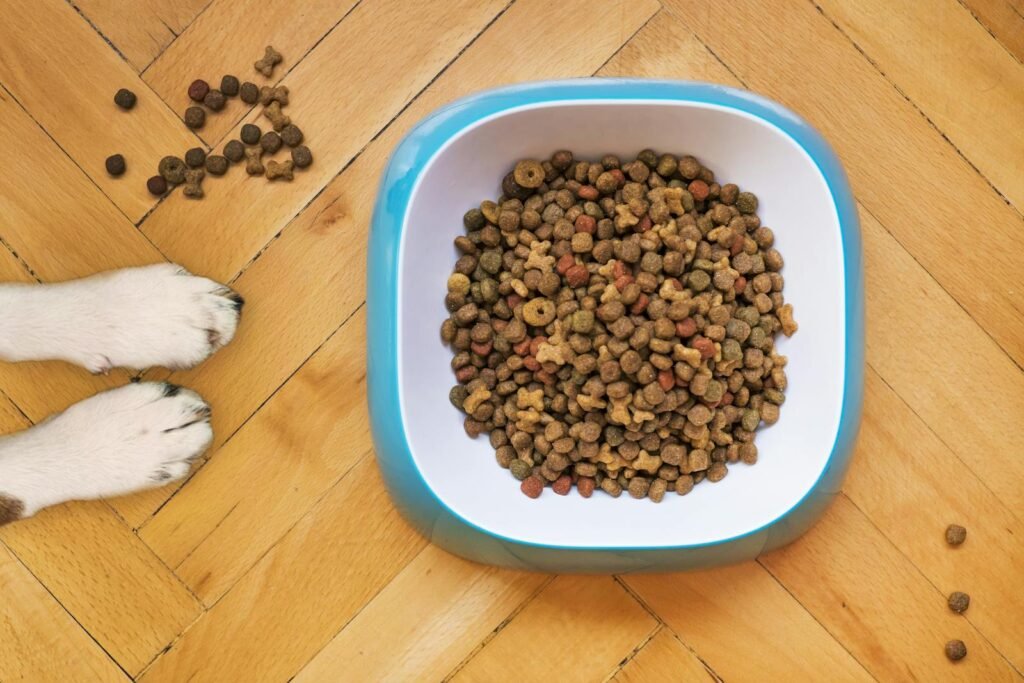
When it comes to feeding your furry friend, selecting the ideal pet food is critical to their nomadic well-being. With so many different choices out there, it can be confusing to decide what’s right for your pet. Pet food labels are intended to be an aid to you, but they can also be difficult to decipher. In this guide, we’re going to walk you through how to read pet food labels, as well as what ingredients to look for in the best food for your pet.
Understand the Pet Food Label
While pet food labels are regulated, they can still be confusing. Some terms and phrases may sound fine until you learn what they really mean. Here’s how to hit the hidden 411 behind the most crucial parts of a pet food label:
Product Name: The product name can provide clues about what is in the food. So, for example, if the label reads “Chicken Recipe,” then the food should contain a lot of chicken. But if it reads “Chicken Flavor,” it might have a tiny bit of chicken in it.
Guaranteed Analysis: Information in this section includes protein, fat, fiber, and moisture levels in your food. You want to compare the percentages to make sure the food suits your pet’s dietary needs.
Key Ingredients to Look For
When selecting pet food, the quality of the ingredients is the most important. Look for the following:
Top-Quality Protein: Protein is an essential macronutrient in your pet’s diet. The first ingredients should be named animal proteins, such as chicken, beef, lamb or turkey. These supply the essential amino acids for both muscle growth and optimal health.
Whole Grains and Vegetables: Grains such as brown rice, barley, and oats provide fiber and energy, along with vegetables like sweet potatoes, peas, and carrots, which supply vitamins and minerals.
Omega Fatty Acids: Substances like fish oil or flaxseed contain omega-3 and omega-6 fatty acids that contribute to a healthy coat and skin, as well as joint and heart health.
Probiotics: These good bacteria help promote your pet’s GI health. Additives such as dried fermentation products or Lactobacillus are commonly employed.

Ingredients to Avoid
Some ingredients are good, some should be avoided. Look out for:
By-products: Though by-products aren’t toxic, they’re often a lower-quality ingredient than whole meats. Seek out food that specifies the meat used instead of using food like “poultry by-products.”
Artificial Additives: Stay away from foods containing artificial preservatives, colors or flavors. These can be detrimental to your pet’s health over a long time.
Cheap fillers: Corn, wheat, and soy are frequently added to pet food as inexpensive fillers. Although they deliver energy, they don’t have the nutritional kick of whole grains and vegetables.
Special Diets and Life Stages
Nutritional needs vary from one pet to another. Did you know that puppies, adult dogs and senior pets need different foods? Ensure you’re giving your pet food that suits their age, breed and health issue.
Puppy Food: High in protein and fat to support growth and development.
Adult Diet: Maintenance and energy level balance.
Senior Food: Lower in calories and fat, sometimes with joint-supporting ingredients such as glucosamine.
If your pet suffers from certain health conditions (whether allergies, obesity or kidney disease), search for food designed to meet those needs.

Wet Food or Dry Food — What’s Better?
Whether wet or dry food is better is subjective — every pet has a different palate, and needs and preferences vary widely:
Dry Food (Kibble): More economical, easier to use, and promotes dental health by scraping off plaque.
Wet Food: Contains higher moisture content, which can be useful for pets that don’t drink enough water. It’s also often more appealing for picky eaters.
Others combine the two, depending on what their pet likes — and how healthy they are.
How to Read the Ingredients List
What’s good about pet food packaging is what the ingredient list can tell you about the quality of the food. They are listed by weight, so the first few ingredients are the most important ones. Always look for named animal proteins (such as chicken or beef) to be the first ingredient, with whole grains or vegetables following that. Stay away from foods that list things that sound vague as the top ingredients, like “meat meal” or “by-products.”
Conclusion
Picking the best pet food means reading labels, opting for high-quality ingredients and taking into account your pet’s specific needs. You also want to make sure that your pet gets all he or she needs which can be done by focusing on these four areas with protein, whole grains, vegetables, and healthy fats to provide him or her with the best possible food they can eat. Remember to seek advice and recommendations from your veterinary professional related to your pet’s health and lifestyle.
Join Pets Fun Zone for more pet care insight and to become part of a community of pet-loving people! Share experiences, learn from others, and find ways to keep your dogs and cats healthy and happy.
- Tags:
- balanced pet diet
- best pet food for cats
- best pet food for dogs
- cat food guide
- choosing pet food
- dog food guide
- healthy pet food
- interpreting pet food labels
- natural pet food
- organic pet food
- Pet Care
- pet feeding tips
- pet food
- pet food for sensitive stomachs
- pet food ingredients
- pet food tips
- pet health
- pet nutrition
- premium pet food
- reading pet food labels
- top pet food brands



